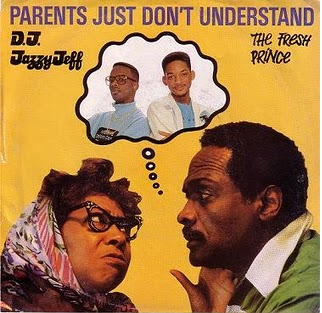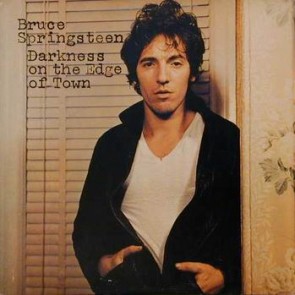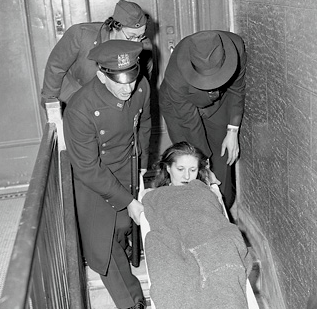The Truly Best-Dressed Characters in Literature
by Jane Hu

Recently our neighbors at Flavorwire picked their ten best-dressed characters from literature. It’s fascinating, if slightly heavy on film adaptions. (“Isabelle Huppert in Claude Chabrol’s Madame Bovary (1991).” No, that would be Gustave Flaubert’s Madame Bovary (1856)!) Isn’t the best part of novels their ability to evoke striking images in the mind alone? Let’s see if we can help!
The author of that list makes a useful confession in the comments section: “Sebastian Flyte totally would have made the list if the text of Brideshead were available online.” Of course. Alas, it is difficult to work with an incomplete library. Especially when it concerns fashion-an obvious matter of personal taste and moral proclivities. (A professor of mine said: “Brett Ashley? Really? Or Scarlett O’Hara? She makes a virtue out of curtains, rather like the von Trapp children.”)
Here are some more suggestions from texts that, for the most part, can be found online:
• Pyrocles in Sir Philip Sidney’s Arcadia (written around 1580) quite appropriately navigates toward the aesthetically pleasing and falls in love with a portrait of Philoclea. He cross-dresses as a gorgeous Amazon and everyone, both male and female, falls in love with him. Sidney devotes long passages to describing doublets of “sky colour satin, covered with plates of gold” and “crimson velvet buskins, in some places open (as the ancient manner was) to shew the fairness of the skin.”
• Who can forget Chaucer’s Wife of Bath from the Canterbury Tales (written around 1400):
Her kerchiefs were of finest weave and ground;
I dare swear that they weighed a full ten pound
Which, of a Sunday, she wore on her head.
Her hose were of the choicest scarlet red,
Close gartered, and her shoes were soft and new.
• Spenser’s Duessa from The Faerie Queene (1590) is “adornd with gold and jewels shining cleare” and “in garmets gilt, / And gorgeous gold arrayd.” The personification of Falsehood, Duessa quite appropriately finds herself covered with shimmering jewels.
• As long as we’re looking at visual interpretations of words, what about Shakespeare (1564–1616)? His characters were written to be seen. Hamlet didn’t just give melancholy a new emotional low, his customary suit of “solemne blacke” has been faithfully donned by sad young men ever since. Forget artistic redeployments of Ophelia, what about her monologue that depicts Hamlet in all his perfect misery:
Lord Hamlet with his double all unbrac’d
No hat upon his head, his stockings foul’d
Ungartred, and downe giued to his Anckle
Pale as his shirt.”
Malvolio fantasizes about lying on a daybed, wearing a “branched velvet gown” and his fetishistic desires culminate as he continually insists “my lady… did commend my yellow stockings of late, she did praise my leg being cross-gartered.” Further, if clothes are a manifestation of a character, Petruchio’s wedding outfit of “a pair of old breeches thrice turned, a pair / of boots that have been candle-cases” is a prime example.
• Less is more in Robert Herrick’s short and seductive Upon Julia’s Clothes: “Whenas in silks my Julia goes, / Then, then, methinks, how sweetly flows / That liquefaction of her clothes.” Indeed, if simplicity is a virtue, then the prize goes to John Milton’s Adam in Paradise Lost 1667), who is “Accompani’d then with his own compleat/ Perfections, in himself was all his state.”
• May we jump several centuries? Even when in a rush, Maria Wyeth from Joan Didion’s Play It As It Lays (1970) is stunningly on key (even if the rest of her life is out of whack):
She dressed every morning with a greater sense of purpose than she had felt in some time, a cotton skirt, a jersey, sandals she could kick off when she wanted the touch of the accelerator, and she dressed very fast, running a brush through her hair once or twice and tying it back with a ribbon, for it was essential (to pause was to throw herself into unspeakable peril) that she be on the freeway by ten o’clock.
• Alternately, some sartorial descriptions demand to be milked. Gabriel GarcÃa Márquez’s lush One Hundred Years of Solitude (1969) displays the beautiful Fernanda del Carpio, whose bridal trunk is “so well organized that the schoolgirl knew by heart which were the suits and cloth slippers she would wear crossing the Atlantic and the blue cloth coat with copper buttons and the cordovan shoes she would wear when she landed.” During the scene of her husband’s death, he vividly describes Fernanda “wearing a pink silk dress with a corsage of artificial pansies pinned to her left shoulder, her cordovan shoes, with buckles and low heels, and sateen stockings held up at the thighs with elastic garters.” Please, let’s never translate this into film.
• Of course, it makes sense that the era of naturalism would produce novels concerned with detailing clothing. Jean Des Esseintes from Joris Karl Huysans’s À rebours (1884) is the archetypal aesthete and dandy. (Oscar Wilde modeled Dorian Gray from him.) Hester Prynne in Nathaniel Hawthorne’s Scarlet Letter (1850) expresses her erotic and aesthetic desires both through the clothes she makes and wears. Prynne’s sewing of her red “A” acts as a symbolic resistance to the ruling social elite. Charles Drolet-Sister Carrie’s first boyfriend from Theodore Dreiser’s 1900 novel-might be considered the first metrosexual in literature. Absolutely mad about clothes, he introduces Carrie to the dizzying world of shopping.
• The athletically built Queequeg from Herman Melville’s Moby Dick (1851) is known and revered most as a character who externalizes himself through his full-body tattoos. His clothes are assembled from a mixture of global cultures and thus Queequeg epitomizes the dandy as a cosmopolitan worker of the world. Also, who can forget the image of Queequea smoking from his tomahawk?

• As much as I adore Edith Wharton and her novels that stage unspoken narratives through characters’ clothing choices, perhaps Lily Bart, May Welland, and Ellen Olenska should not get all the attention. What about Undine Spragg from The Custom of the Country (1913)? She is surrounded by people who are “all crazy to dress” her — and she welcomes them with open arms. Like most of Wharton’s female characters, Undine cunningly conducts her social transactions through necklaces and dresses. For walks around the public park, she “put[s] on her most effective dress.”
• One must also give a shout out to Henry James’s Daisy Miller and Isabel Archer and Bram Stoker’s Dracula, who are all, if anything, immaculate. Daisy Miller: A Study does take its sweet time to inspect Daisy — the word “pretty” is employed 43 times in this short novella. But that can’t be helped in a world where “white muslin, with a hundred frills and flounces, and knots of pale-colored ribbon” does not mean excess, but perfection. The 19th c. list goes on and on (Walter Elliot from Jane Austen’s Persuasion (1818), Rosamond Vincy from George Eliot’s Middlemarch (1869)) that it ultimately must come down to a matter of personal taste.
* * *
If one’s simply looking for books concerned with how fashion articulates desire, Wharton would certainly be a good place to start. And let’s face it, who really can authoritatively define “best dressed”? Perhaps we are more likely to remember the eye-catching over the stylish. Some novels of interest might be Colin MacInnes’ Absolute Beginners (1958)Â with its overdressed mod fashions of late 1950s London or Peter Carey’s Jack Maggs (1997), filled with outlandish and foppish costumes. A personal favorite is D.H. Lawrence’s Women in Love (1950), with its cast of characters who wear “clothes in pure defiance.” Ursula and Gudrun’s bright, bohemian clothes, Oprah’s “beautiful oriental clothes,” and Gerard’s “blue silk wrap” are all delightfully sensuous.
Unfortunately, the list does grow rather Eurocentric. Characters in Sam Selvon’s The Lonely Londoners (1956) do not possess the luxury to dress in “pure defiance.” As immigrants rejected by London society, they try to impress — and so blend in — through their clothing choices. Eye-catching in the wrong way, they employ style as a means to fashion a new identity.
For another look at identity and clothing, Yinka Shonibare’s Diary of a Victorian Dandyuses not literature, but visual art, to respond to Dorian Gray-esque figures. Shonibare’s work exposes the relation between styles of dress, class and imperial domination. Using so-called “African fabrics” (bought and made in Europe), he reimagines famous 18th c. paintings to expose the artificiality behind one’s concept of both Africa and British Victorianism. Maybe someone will make a movie out of it.
75% Less Fat
“Someone the other day called me ‘a skinny Chris Christie.’”
–Maryland Republican gubernatorial candidate Brian Murphy is drawing attention in the wake of his recent endorsement by Sarah Palin (with whom, as is the custom, he had never previously spoken). As Ben Smith points out, “a few months ago, everyone wanted to be the next Scott Brown.” Now they all want to be the governor of New Jersey, but the size of a normal human being.
An Interview with Earnest Pettie, Our Secretive Hero of Wikipedia
by Aaron Lefkove

Last week I reported on the secretive heroes of Wikipedia and their detailed academic descriptions of 90s hip hop classics. Over the weekend, the author of the two best entries-Warren G and Nate Dogg’s “Regulate” and DJ Jazzy Jeff & The Fresh Prince’s “Parents Just Don’t Understand”-made contact. Earnest Pettie-or Earnestp if you prefer his now-defunct Wikipedia handle-is an editor at Break.com. And now we ask him some questions!
“The reason I only did two,” Pettie wrote, “was I was afraid that the Wiki community would figure out what I was doing and start undoing my entries. I was inspired by the entry for Ol’ Dirty Bastard’s ‘Got Your Money’ and did the Fresh Prince to get my sea legs before doing [Regulate].”
From there we went back and forth regarding a few of the issues raised by these two bits of pure Internet gold.
I noticed that thus far you have only tackled hip hop duos. Was that by design or just sheer coincidence? You know, do you have plans to tackle any other great duos like Pete Rock & CL Smooth, Eric B. & Rakim, or my own personal fave “It Take Two” by Rob Base & DJ EZ Rock?
It is purely coincidental, although that question just made me realize how many rap stars during the first two generations were duos or groups… probably because it was too hard to do it alone back then. I mean, you had to have at least one guy to beat box.
Drafts of the entries for “Parents” and “Regulate” appeared on your personal blog on July 9th and 11th respectively-around the same time you published them on Wikipedia-however they really were discovered on a mass level just last week. When did you start to realize you had something big on your hands?
I realized it last week. My blog gets very little traffic, deservedly so since my updates are so sporadic and I’m not really known for anything. My wife doesn’t even check it out. Last week, however, there were a couple days where a person or two happened across by searching for specific phrases from the synopses, so I did a little bit of checking and traced things back to a blog entry at ESPN, which I think may have been a watershed moment. Looking further, I noticed that there also had been a popular Reddit thread, which made my day since I’m a Redditor, myself.
From a comedic standpoint why does hip hop in particular lend itself so well to these types off descriptions? I mean the synopsis for Rush’s “2112 Overture/The Temples of Syrinx” is hilarious but the “Regulate” plotline is just so next-level.
This is going to sound silly, but I think it’s like when Groucho Marx takes the wind out of Margaret Dumont. Hip hop strives so hard to achieve an unschooled posture that translating it with academic-sounding language, ironically, undermines it. That’s why the ODB one worked so well and why my “Parents Just Don’t Understand” one was, in my opinion, less successful. In that one, I was working against Fresh Prince’s purposefully naive viewpoint, which just isn’t the same.
I’m glad you brought up the plotline of “Regulate,” because it’s something that surprised me. I don’t really listen to song lyrics-I’m more into the actual music-and I can’t really hold onto lyrics, so I’d never noticed that the song is a narrative with scenes being cross-cut against each other until the two characters meet up. There’s something cinematic about that, and I can’t think of another song that does it! Not even the Beastie Boys’ “Paul Revere”, which has three different characters. That song’s narrative is straightforward with the characters meeting each other along the way.
An unintended consequence has been that some people are not totally in on the joke. I mentioned “ironic racism” in my own piece but others have said these are written in “a language that white people understand” or that they are in some way condescending in juxtaposing this heady professorial-type language with lingo commonly associated with rap and hip hop. Did you at all consider any of that before these went up?
This is a weird and interesting gray area for me. I’m a black guy who has been accused of sounding “white” before, so the tension in the entries is inherent in me. When I wrote the entries, I didn’t think about any kind of cultural context. I just got that academic-sounding language being used to describe something decidedly unacademic could be funny. If there is a racial response to the entries, I think that it is because educated and uneducated are frequently confused with white and black, respectively, by both groups. So there’s already a tension there. I see how black people could find the joke condescending and white people could find it ironic-racist but neither is entirely accurate. Also, those perspectives assume that these pieces are standalone things when anyone who has read other things I’ve written knows that I frequently adopt a similar “educated” tone in my writing because I love verbal humor and that voice gives you a much broader and more unusual vocabulary to work with in making jokes. I think that’s one of the reasons Woody Allen used it so frequently in his short stories and essays.
I appreciate that people found my entries to be funny. That’s why I wrote them and slipped them into the Wikipedia entries. It allows me to more fully appreciate why Dave Chappelle stopped doing his show on Comedy Central. Not that our situations are anywhere near similar, but I do see better how he knew and understood what he was doing was funny but was troubled by the way certain portions of his audience were enjoying them.
There has been some talk on the Wikipedia backchannels about these entries with users voicing strong opinions that they remain intact or conversely that they are a prank and should be removed completely. It looks as of now that they will remain on the site though in a somewhat altered form. Have you been following this controversy at all?
I haven’t followed the controversy. I know that the community is passionate about keeping Wikipedia credible, which is something I appreciate and support. I only wrote two entries because I thought anything more would pique the interest of the community and they’d delete the entries on the grounds that they were vandalism. With my specific entries, I don’t think there is an immediate reason to delete them. Even though there is a smirk, they represent valid — if opinionated — synopses of the songs. It’s Wikipedia, though, and it is the nature of the site that the edit will stand until someone changes it, and I’m OK with that.

Ok, one last question: if you could write a new verse to the old 3rd Bass classic who would you most like to see get the “Gasface”?
Cam’ron gets the gas face! Hip Hop Harry gets the gasface! No gasface for S.J. Perelman! Superwolf gets the gasface! You know what I’d love to hear? A Kidz Bop version of “Gasface.”
Aaron Lefkove would most like to be remembered as the guy who coined the phrase “Summer of Megadeth.”
Bruce Springsteen, "The Promise"
Man, I’m psyched to see The Promise, a documentary about the making of Bruce Springsteen’s 1978 album Darkness on the Edge of Town, my favorite Springsteen album (which is a little bit like saying, “the favorite part of my heart.”) Directed by longtime Springsteen cinematographer Thom Zimmy, it’s set to premiere at the Toronto Film Festival next month, along with interesting-sounding documentaries by Errol Morris, Alex Gibney, and Werner Herzog (whose Cave of Forgotten Dreams is about prehistoric cave paintings and is for some reason shot in 3D.) HBO will be airing The Promise for me in October-and for you, if you want to see it too.
The song from which the movie takes its title was written in 1976, but went unreleased until it’s inclusion on the 1999 rarities compilation 18 Tracks. Besides being a pretty great song, it serves as a cool sort of musicology document (or maybe just a “Bruceology” document; this is geek stuff, for sure) because its so prototypical of Springsteen’s writing from that time period, from the opening lines-”Johnny used to work in a factory…” (this was ten years before Bon Jovi-feh!-would bring his brother, Tommy, to the docks)-to the chords, which are basically the same as those from “Badlands,” which did make the cut for Darkness, appearing as the album’s opener. You can hear parts of the song cropping up in “Racing in the Street,” too, and also in the album’s title track. There are distinct references to “Backstreets” and “Thunder Road” from Springsteen’s previous album, Born To Run. And similar themes or melodies would show in the title track to the next one, 1980’s The River, and “Highway Patrolman,” from 1982’s Nebraska, and “No Surrender,” from 1984’s Born In the U.S.A.

It provides a good look, I think, at how a songwriter puts songs together, using bits of one here, a recycled idea there. And of how a talented artist can make a lot of good work out of a few seminal themes. Of course, people who don’t like Bruce Springsteen would probably disagree, and say that this is just evidence that the guy writes the same song over and over again. But, you know, that’s only proof that they have a shriveled lump of coal where their heart should be, and that there’s no accounting for taste in New Jersey or anywhere else.
I'm With The Brand

Unemployment, it seems, isn’t short enough on dignity all by itself. The random convulsions of labor markets and the cost-cutting mandates of merged corporate properties of course should never draw skeptical inquiry from their collateral victims. But as Money magazine correspondent Paul Keegan explains, if the nation’s reserve army of the chronically jobless is finally to start turning the corner, its members need to do much more than silently assent to their grim fate. No, they need to double down on the market-personality complex, and embrace the very ideal of the protean corporate self that has cast them into the outer economic darkness. They need, in short, to promote the brand of You.
The logic is simple, you see: “whatever reputation you have is spreading quickly across the Internet, thanks to Google, industry blogs, and social-networking sites,” Keegan explains. After all, he adds, “even failing to turn up on search engines says something about you.”
Of course, the thing it says may well be that you have a life of your own, or that the susurrations of the online reputation industry leave you cold, or that you fetishize the quaint, classically liberal notion of personal privacy. No matter; these days, employers instantly adjourn to Google or Facebook to size up the character of would-be hires, and therefore “it’s critically important to take control of your professional image, or ‘brand.’… Actively promoting the brand you’d like to be can help get your name on the radar of industry leaders and advance your career.”
As Keegan lays things out, it’s all just a matter of strategic character-tweaking. After conducting your own candid identity-tour through Google, “ask former colleagues to give anonymous feedback about your strengths and weaknesses via reachcc.com/360reach. These tools can help you identify both any problems (the photo of you tipsy at JazzFest) and positive qualities to exploit (your efficiency).”
Just how a roundabout survey of anonymously polled former colleagues can itself yield evidence of superior efficiency is a puzzle for high-order Zen adepts-it seems that the process itself rules out a positive verdict. Still more recondite mysteries await in reachcc’s other webby features, such as its scarifying “branding club,” where aspiring employees “can understand what makes them exceptional, and how they can use it to deliver on your corporate-brand promise in a way that is authentic to them and their own personal growth.” Again, if you’re repairing to branding clubs for proof of your irreducibly exceptional nature, I’m pretty sure ur doing it rong-just as, say, you’d be ill-advised to scour VH1’s reality programming for tips on how to sustain human intimacy. And releveraging one’s character in maximal corporate-brand-promise-delivery mode seems a singularly poor prescription to do anything “in a way that is authentic” to oneself, one’s “personal growth” or to whatever remains of the integrity of the English language.
But really, the revolutionary self-criticism is just getting under way. “Next, in 20 words or less, answer the question, ‘How do I want employers to view me?’ “ Here again, it’s vital to isolate the unrepeatable essence of your Youness-though this isn’t a question of some austere, Kierkegaardian quality of inwardness. Rather, just “focus on what makes you unique-maybe you’re an engineer with great people skills or a marketing exec who knows accounting.” Or maybe you’re having a bit of trouble squaring the uniqueness ideal with that whole wanting-employers-to-view-me question. That’s probably because, as Christopher Lasch explained long ago in The Minimial Self, “the conditions of everyday social intercourse, in societies based on mass production and mass consumption, encourage an unprecedented attention to superficial impressions and images, to the point where the self is indistinguishable from its surface”
But that’s a good deal more than 20 words-and what’s more, it’d make for a real bummer of a blog post. Because, yes, the next stop in your boss-osculating self-reinvention tour is the Internet! “Start by making sure that your LinkedIn profile plays up your brand message-use the ‘summary’ to state it outright-and that your Facebook page doesn’t distract from it, since both show up in early searches.” And why stop there? “You could build a website to promote yourself further. Or you might start a blog on a topic that fits with your brand identity. (But remember that an infrequently updated blog can do you more harm than good.)” Also: Don’t forget the link-whoring! “Drive traffic to your site by commenting on other blogs and asking them to link back, says search-optimization expert Evan Bailyn of First Page Sage. Also, feed blog posts automatically to your Twitter and Facebook accounts.”
Of course, the title “search-optimization expert” by itself is enough to make any chronically unemployed person despair that this economy will ever create a real job again. But all this dizzying comment-for-branding’s sake raises a larger question: Why would mastery of the time-killing canons of the blogging and social media worlds recommend anyone as a desirable worker in the first place? Why should a prospective employer assume that if you’re now furiously shoring up your reputation in blogland, then hieing over to Twitter and Facebook to boost your SEO quotient, you’d behave at all differently when he or she grants you a bit of scarce and valuable cubicle space? Transforming yourself into an online brand doesn’t mean you represent anything of real value, any more than commenting on a blog means you really have anything to say.
But perhaps that’s the real point here. The sooner that we’re all our own self-maintained online brands, the more briskly we can be moved across the placeless, virtual frontiers of digital-age production, not as collectively bargaining workforces, but as roving bands of impression-managing personality glyphs. Brands, after all, principally exist to be consumed.
The goal of the Taylorite phase of industrial production was famously to place the manager’s brains beneath the workman’s cap, but it seems that the New Information Economy is upping the ante by supplanting the besieged private self with the market’s very soul. If the signature postwar manual of self-marketing was How to Win Friends and Influence People, its closest cognate in today’s free-agent is Discipline and Punish. As Mark Crispin Miller also said long ago, Big Brother is you, watching.
The Chris Lehmann Brand represents industriousness, incisiveness, and frequent use of hashtags.
Two Great Poems
It’s gotta be a real winner of a week because there’s poems by both Matthea Harvey (you enjoyed her when she published with us) and Anne Carson (!!!) in the New Yorker.
Footnotes of Mad Men: The Youth Machine and Godzilla Handjobs
by Natasha Vargas-Cooper

The main ingredients of American counterculture formation all guest-starred in last night’s “Mad Men” episode: abortion, Berkeley, Vietnam and, most ominously: young people. The ‘youthquake’ is not just an explosive population boom, it’s when, supposedly, teenagers and college students seized control of culture from adults. At the very least, they seized control of the consumer goods market. Beginning around the 1920s, a common theme in advertising was to offer a return to youth and vitality (and relevance in the towering industrial age) through consumer goods. Oatmeal, face creams, sodas all made mention of youth in their slogans. But that was selling youth to the aging. In the 60s, the symbolic role that youth played in American culture-honesty to self, renewal, rejection of ancient values-became a driving market force. This notion was really that becoming an adult meant participating in consumer culture. This is perhaps the most loathsome legacy of the Boomer’s ascent to cultural dominance: the perpetual teenage mentality of rebellion through buying things.

• The dogma of parental authority was being slowly dismantled through the early 60s and was eventually bulldozed, thanks in part to the protest movement coming from Don’s Long Beach Lolita’s college. Throughout much of 1963, Berkeley students were actively involved in mass protests against banks, grocers and city government for racial discrimination taking place in nearby Oakland-a suburb that played host to a tiny affluent population and a large, mostly black population mired in grinding poverty. After enough business owners and politicians complained to the school’s administration for their unruly and cantankerous student body, the Berkeley dean took action: student political groups were banned from using the school’s plaza to solicit support for “off campus political and social action.” This sparked giant and immediate demonstrations on the plaza, in front of the administration’s building and eventually inside of the dean’s office. In the melee, a charismatic young man with wild hair and a riveting manner became the de facto leader of the protests when he gave this impromptu speech in late 1964, before leading students into halls of the dean’s office for a sit-in.
There is a time when the operation of the machine becomes so odious, makes you so sick at heart, that you can’t take part; you can’t even passively take part, and you’ve got to put your bodies upon the gears and upon the wheels, upon the levers, upon all the apparatus, and you’ve got to make it stop. And you’ve got to indicate to the people who run it, to the people who own it, that unless you’re free, the machine will be prevented from working at all.
• Joan has had abortions or, as she refers to them “procedures,” but now Joanie would like the option to have a baby. Though her doctor has proven himself to be a condescending finger-wagger when it comes to ladies and family planning (remember in season one, when he warned Peggy not to become the “town pump” if he gave her the pill?), he was willing to put not just his medical license on the line but possibly his own freedom, as he once performed an abortion for Joan. Aborting pregnancies in 1964 in New York, depending on the length of pregnancy, could mean jail time for physicians.

If Joan were to find herself with an unwanted pregnancy-as a married lady-she could have put in application to the Mount Sinai abortion panel in New York. She would have needed the recommendation of a psychiatrist that her life would be in danger if she were to become pregnant-due to threats of suicide or a promise utter mental collapse. Then two consultants would have to be consulted and one would have to testify before the abortion panel. 1 out of 4 abortions approved by the panel in 1958 were given to married women. It wasn’t until 1965 that abortion reform would begin to loosen state laws around performing legal abortions for rape and incest victims.
• Lane Pryce with his lower-upper class accent and prim disposition! He makes me want to salute the Union Jack every time he comes on screen. (Or, apparently, off-screen.) He was finally on camera long enough to get a look at that distinctly continental apparel. The English suit that Pryce dons is heavy even for winter, nothing like the less-elaborate suits of Wall Street in the 60s, or the slanted pocket Italian suit with the barely-there-lapels. Pryce’s suit is purebred English: with vest, tie with a full Windsor knot, in muted browns, grays, and blues-if you want to get cheeky you could go cream-a white pocket square (no patterns), with the shirt quite starchy with hard collar. (He’s an interesting contrast as Don’s ties are getting ever-thinner.) And on the jacket, beautiful buttonholes. As Oscar Wilde wrote, “A really well made buttonhole is the only link between art and nature.” An Englishman’s business style rested upon the idea that through conformity to tradition there is dignity.
You can always find more footnotes by Natasha Vargas-Cooper right here, or, you know, you can get a whole book of ‘em.
Howard Jacobson For Beginners
“That’s the great test, if you’re going to be a great comic writer, not a humorist, you’ve got to take it into the throat of grief. Can you make laughter and seriousness so close that they are the same thing? There’s nothing more wonderful than when the comedy’s got horror in it, got blood in it. And the seriousness is at all times aware of its own preposterousness. What’s it for, this seriousness? Everything is loss, is nothing, in the end.”
-Howard Jacobson’s new novel, The Finkler Question, is getting some of the best reviews that this underappreciated author has received in his career. If it’s even half as good as The Mighty Walzer
-a personal favorite-I’m sold. If you’ve never heard of him and are curious, start with this profile. He also writes a very good column for the Independent.
"Jersey Shore": The Animated Series
It is time for “Jersey Shore”-more specifically, Snooki-to get the digitized news treatment. This lacks the narrative immediacy of previous entries, but it is still worth watching, I guess. I mean, it is certainly more worth watching than the actual “Jersey Shore.” For those who are really interested, the subtitled version follows, but I prefer to be left to my own creative devices on this one. Enjoy.
Real America: The CEO of Target and Institutions of the Anti-Gay Christian Right
by Abe Sauer

When Target’s CEO said he was “sorry” last week for his company’s donation to anti-gay causes, AP, CBS, TPM, AOL and a number of other acronyms declared that Target had apologized for its political donations. Yet, anyone who had ever had an intense fight with a spouse or lover knew the “I’m sorry it made you feel that way” nopology when they heard it. A deeper look at Target’s Gregg Steinhafel, his political team, and his engagement with anti-gay Christian organizations may explain why the CEO’s actions and statements on supporting gay equality don’t mesh-and why they probably won’t anytime soon.
But first? MoveOn.org showed up.
MoveOn.org has tried to make the Target story its own, at times bumbling into the bear traps set for it. One can almost smell the salivation of the Wall Street Journal writers who framed it like so: “The campaign against Target was orchestrated by liberal-advocacy group MoveOn.org.” No, actually, it wasn’t.
The Journal story goes on to quote Ilyse Hogue, who uses the opportunity to pun: “We made Target the target.” In the process, MoveOn.org scrubbed much of the gay rights outrage, moving the focus to just another red-state-blue-state my-team-your-team Mission Swiftboat Accomplished debate. In the end, Ms. Hogue demanded Target stop “meddling in our elections.” One assumes she then tore off in the Mystery Machine.
Those in Minnesota might be left wondering where MoveOn’s Target boycott was two years ago when the corporation and its executives were the largest benefactors of Norm Coleman’s now legendary campaign against Al Franken. (Coleman, by the way, supports a gay-equality-banning constitutional amendment and, as St. Paul’s mayor, refused to endorse the Twin Cities Pride.)
But that’s not the point, is it? Yesterday, a MoveOn.org email hit inboxes saying “We need resources to pay for these high-profile tactics. If we can raise $150,000-the same amount as Target donated to a right-winger-we’re confident we can break through the media chatter and spin.” One “high-profile” tactic proposed by MoveOn? “Skywriting above Target’s headquarters.”
Despite being twisted into a Citizens United showboat by MoveOn, the Target fiasco is really about the corporation’s claim of “unwavering” support for gay equality.
* * *
The pro-gay rights Human Rights Campaign is up a creek without a paddle. It’s CEI ratings of businesses were the one thing it held over Target. Now devastated in meaning, with Target’s gay-facing PR already blown to smithereens, HRC’s challenge is like a fart in the room, embarrassing the one who did it, laughed at by the one who heard it.
One might wonder why HRC’s outrage has not been backed by PFLAG, (Parents, Families and Friends of Lesbians and Gays, Inc.), a gay advocacy group with over 200,000 members and over 500 US affiliates. PFLAG has yet to even acknowledge the Target matter. Surprising given the organization’s official policy statement on marriage equality, stating that PFLAG opposes “any attempts at either the federal or state level to introduce constitutional amendments restricting marriage to heterosexual couples, rendering LGBT people second-class citizens” and its recent statement regarding the Prop 8 overturn: “The right of gay and lesbian couples to wed on an equal legal basis with heterosexual couples has long stirred opposition not only among social conservatives but also among a much broader swath of society. But in the time since the landmark California Supreme Court ruling legalized gay marriage, a significant social shift seems to have occurred.”
PFLAG’s silence is especially confusing regarding the involvement of Randi Reitan. The gay-rights activist (and mother to a gay son) was widely known in Minneapolis as a “PFLAG mom” long before she became the public face of the Target protest. Reitan’s essays had even appeared in PFLAG publications.
PFLAG’s silence might have something to do with Brad Wagner. Wagner is billed as Target’s “diversity consultant.” His consulting duties appear to include being the good gay face of Target in its time of need. When those 250,000 signatures were delivered to Target on Friday, Wagner was trotted out, along with Alexis Kantor-one of the co-chairs of Target’s gay and lesbian business council and reported in the press as an actual bona fide lesbian-to collect the ballots and placate the outraged. For his part, Wagner offered his own apology (?) for Target: “We’re sorry that this decision affected people that we did not intend. Or we did not anticipate for it to intend.”
It just happens that Wagner also sits on the board of the Twin Cities PFLAG, to which Target is a primary donor. Wagner and PFLAG did not return multiple requests for comment.
The twisted mind-screw is that-the money relationships between corporations and advocacy groups they support and depend on for street cred aside-there is a fundamental question to be asked about how much can be expected from Target’s leadership going forward given their personal beliefs. This is especially true of Target’s most powerful man, CEO Gregg Steinhafel.
* * *
Steinhafel himself maybe finds his guidance as much in faith as in a balance sheet. Though an extremely private person, a few details point to a man and a family involved in a particular strain of Christianity well beyond that of simply going to church on Sunday.
When it comes to leadership advice, Steinhafel endorsed Rev. Tim Geoffrion’s spiritual life coaching and leadership consulting, which combines “relevant biblical teaching” with “leadership consulting.” The Target CEO also found guidance with Terry Esau’s “Breathing exercises with God” program which “nudges human hearts to willingly say,… ‘I want to become the brush in Your hand, Jesus.’” Steinhafels endorsement called the lifestyle exercises espoused by Esau “a better way to live.”
It must be noted that there is no evidence that Steinhafel’s spiritual guides are outwardly gay-hostile-after all, Geoffrion has even appeared on HuffPo.
But there’s more. Steinhafel and his wife are also top-line donors to to the Minnesota organization “TreeHouse,” which provides “faith-based hope and guidance to hurting teens, alumni, and parents during difficult times.” Steinhafel also serves on its board. The organization’s annual report highlights one teen’s story, “Before I began TreeHouse, I didn’t even believe in God. Because of TreeHouse, I now have a relationship with Him. I know that God has something great in store for my life.” Another’s success story goes, “One day I was meeting with a staff member and we began to talk about God. I became a Christian that day and I remember feeling for the first time in my life, I truly belonged somewhere.”
Steinhafel’s daughter attended Wheaton College, a Christian school that signs all incoming students to a Biblical “Community Covenant” which condemns homosexual behavior. Wheaton expels any homosexual it identifies. The school’s Center for Applied Christian Ethics currently includes resources on homosexuality such as “Science and the Ecclesiastical Homosexuality Debates,” which classifies homosexuality as a “crisis,” and “Understanding Homosexuality” which argues that “The removal of homosexuality from the DSM does not and cannot conclusively decide the issue of the pathological status of homosexuality.”
Despite the $40,000-plus tuition per year, the Steinhafels likely did not qualify for financial aid.
After Wheaton, the Target CEO’s daughter landed a position as a Target Senior Business Analyst for the retailer. She also attended the Focus on the Family Institute. That’s the same Focus on the Family that offers “counseling for unwanted same-sex attractions.” (The Target CEO declined an opportunity to discuss this.)
* * *
Steinhafel also chose not to discuss his vague claim regarding timing of “a strategic review and analysis of our decision-making process for financial contributions.”
Target’s current corporate statement explaining its civic activity in the realm of political giving states, “Corporate political contributions and related activities are reviewed regularly with our senior management” and that before being made, donations are checked to “determine that the contribution is consistent with our business interests and, under the circumstances, is an appropriate means of advancing our public policy position. This determination is made either by our vice president and Government Affairs, executive vice president and general counsel or our chairman and chief executive officer.” (Emphasis, mine)
Those last two, chairman and CEO, are the same person (Steinhafel). The executive vice president and general counsel also happen to be the same person, Timothy Baer. Baer’s personal giving history? Thousands to Erik Paulson, Mitch McConnell, John Kline and the anti-gay rights Freedom First PAC-and, of course, Norm Coleman. He has donated to a couple pro-gay rights candidates. For example, in 2006, he gave Ember Junge $250.
That leaves just one other person in Target’s political giving review process beside Baer and Steinhafel. Target’s VP of government affairs is Matt Zabel, the former chief of staff for South Dakota Senator John Thune. Beside deciding where Target’s political money goes, as Target’s government affairs head, Zabel, an anti-gay equality acolyte, is the corporation’s official legislation-facing representative.
Just to be clear, the Target CEO’s commitment to gay equality includes hiring, into one of its highest positions, the former chief of staff for a politician who supported a constitutional amendment banning gay equality as well as a law banning gay adoption. Meanwhile, upon his hiring, Baer said, “Matt brings broad knowledge on a range of important policy issues….”
In retrospect, other Target decisions seem suspect. After giving grants to Planned Parenthood of Minnesota and South Dakota for every year since the late 1970s, Target’s foundation suddenly stopped in 2001. That came a year after Target’s change from Dayton family ownership in 2000. Yet, the Target Foundation had made these grants for years despite a prolonged boycott effort by anti-abortion activists. The change in policy was attributed to the Target Foundation coming under new leadership-coinciding with Gregg Steinhafel becoming Target’s CEO.
Then there is Target’s recent “conscience clause,” which allows Target pharmacists to cite religious beliefs and refuse to fill emergency contraception prescriptions without penalty. Tom Emmer, whom Steinhafel has supported with Target’s corporate money and his own family’s, authored Minnesota “conscience cause” legislation.
If the three people who completely control the purse strings to Target’s political giving all favor conservative Republicans, with one finding his core guidance in Christianity and another (the company’s political liaison) having actively worked to promote anti-gay equality politics, is it philosophically reasonable to believe the Target CEO’s support for the GLBT community could be, in Steinhafel’s own words,”unwavering?” In fact, from Target’s own “conscience clause,” should it be expected to be?
Steinhafel has been adamant that the recent donations made by Target to support anti-gay candidates like Emmer, Bachmann, Roy Blunt, etc., were solely with business interests in mind.
So we thought it was right to ask Steinhafel directly: “do you personally support a law in Minnesota legalizing gay marriage, as well as national legalization of gay marriage?”
The Target CEO’s response (via Target Communications)? “Unfortunately, we are unable to address the points or the questions in your e-mail to Mr. Steinhafel.”
That is unfortunate. But more happily, it’s a question Mr. Steinhafel’s daughter will not have to worry about during her wedding at his church a month from now.
Those gay Americans who are legally denied equal rights by the herd of politicians Target has zealously supported, including those who it now includes in its highest ranks, can take solace in the happiness soon to be enjoyed by the Steinhafel family. As told by the Target CEO’s soon-to-be son-in-law:
“She turned to see my mom on the top deck of a 3 story, 17th century, wooden steam boat. We both stood and watched as my Mom threw a large white sign over the side of the railing. It read: “Love of my life…” Then my dad popped up from behind the railing and threw over the next sign, “Be my wife.” [Her] mom was next; her’s read, “I love you forever.” And finally, [Her] dad threw over a sign that read, “Will you marry me…?”
I turned to [her], told her absolutely nothing of what I had planned to tell her at the massage but, instead, all that I truly loved about her, and then paused, got down on my knee, pulled out a ring that looked just like everything she had just told me she wanted, and asked her to marry me.
Her answer was ‘yes.’ It was the happiest moment of my life.”
In 2007, Abe Sauer briefly worked for a temp agency that placed workers with Target, though he never worked there. Instead, he briefly temped at Best Buy. You can reach him at abesauer AT gmail DOT com.
Correction: An earlier version of this story stated that Gregg Steinhafel attended Wayzata Community Church. While Steinhafel chose not to deny this claim when it was presented to him during fact checking, church officials have confirmed it. It is still true that Steinhafel’s daughter will be married at Wayzata Community Church on Sept. 5.
